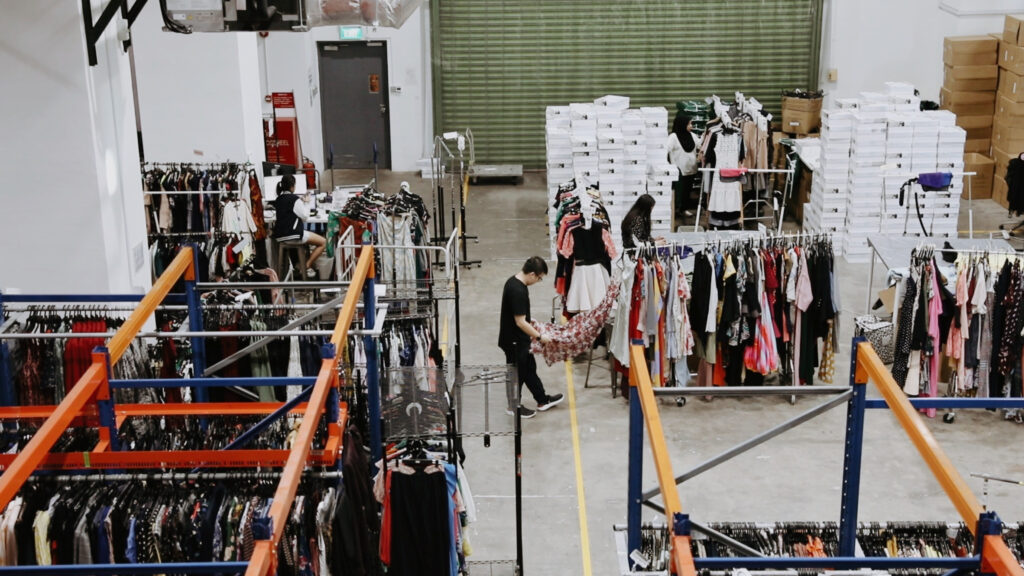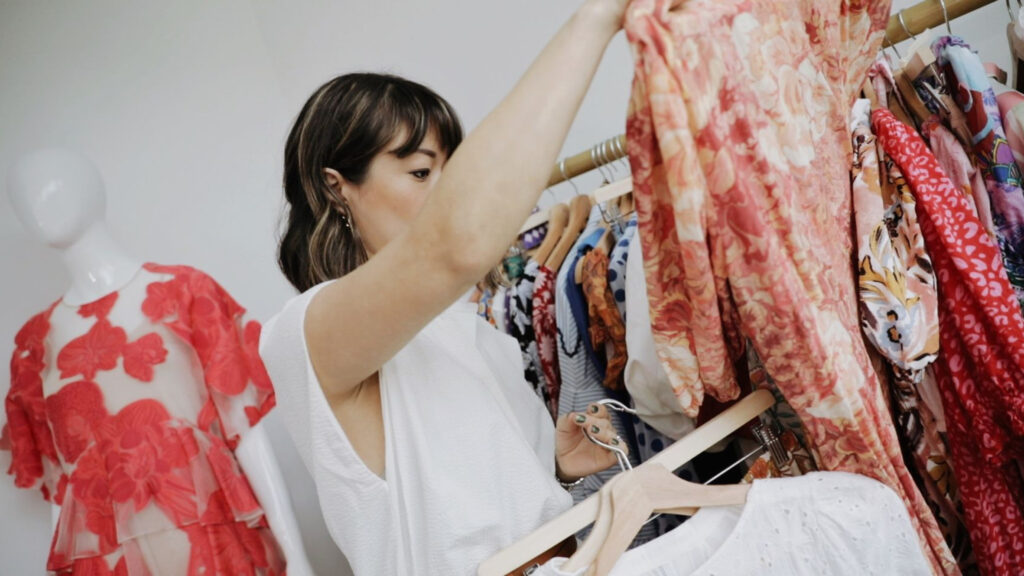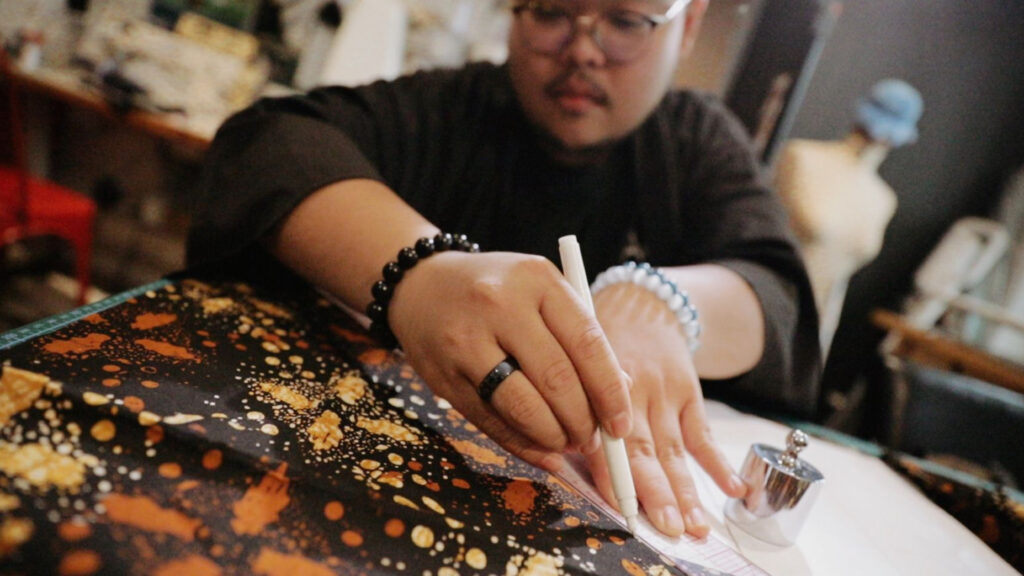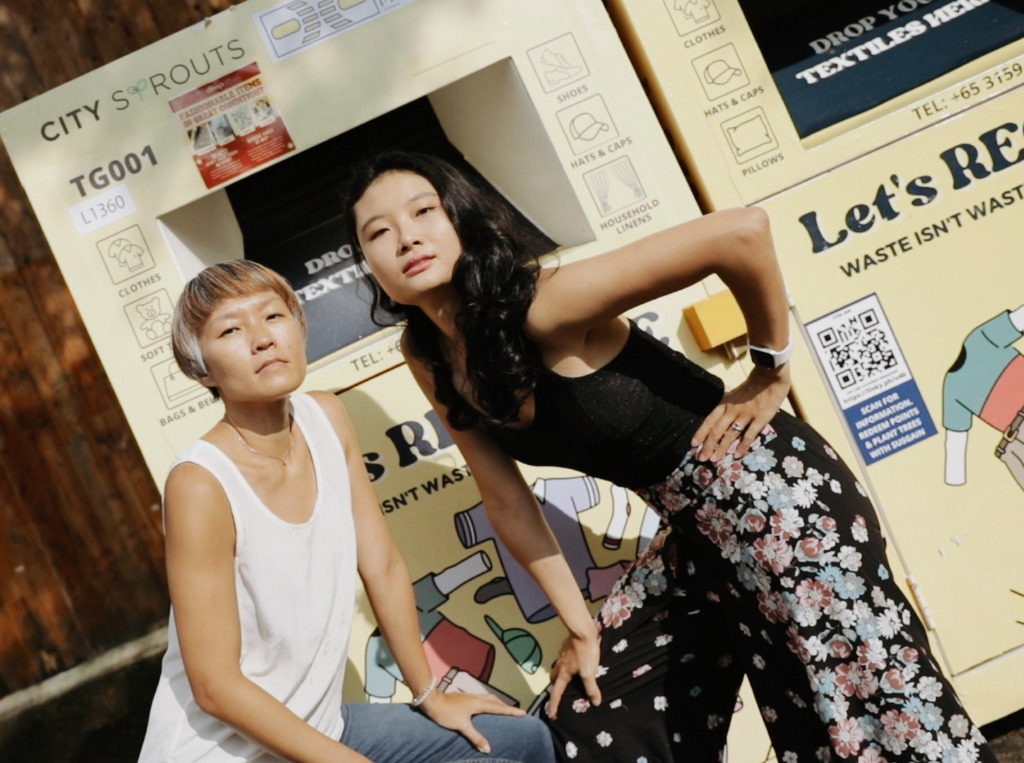Eco Fashion Platform Releases Documentary Celebrating Singapore’s Sustainable Fashion Space
9 Mins Read
Singaporean design discovery platform Zerrin‘s new documentary, ‘The State of Sustainable Fashion in Singapore’, spotlights local creatives and thought leaders advocating for a more responsible fashion industry. We spoke to Zerrin founder Susannah Jaffer about the release and the island nation’s relationship with sustainable fashion.
Shot over two days, the aim of the free-to-watch 17-minute documentary was to be an example of more sustainable storytelling, as advocated by the UN Environment Programme’s Sustainable Fashion Communication Playbook. It will be followed by a series of in-depth videos zooming in on specific talking points throughout September.
Zerrin says Singapore’s sustainable fashion movement has come into much sharper focus in the last five years. While the city-state’s overall fashion industry is projected to grow by 13.06% annually to reach $2.5B in 2027, a 2022 YouGov Profiles survey found that six in ten citizens prefer brands that are sustainable, though only 46% are willing to pay more for eco-friendly products.
Government support for sustainable fashion
The city-state is home to a range of new independent businesses and creatives in this space, representing various facets of sustainable fashion, from swapping and renting to recycling and mending. “I think the increased reporting around climate change [and] the pandemic made most of us reflect on a deeper level of what we value and how we move in the world,” Jaffer tells Green Queen.
“That, and the increased focus from the industry on the topic, along with increased attention from governments on policy and legislation – something that is still moving at a snail’s pace, but there have been some breakthroughs.”
She explains that grassroots initiatives and businesses advocating for sustainability have long-predated support and funding: “Today, while initiatives like the SG Eco Fund are gaining traction to accelerate and nurture innovative ideas, few of these initiatives focus on the fashion industry.”
According to the National Environment Agency, the country produced 254,000 tonnes of textile and leather waste, only 2% of which is actually recycled. But Jaffer says that Singapore has yet to take comprehensive action when it comes to regulating textile waste.
“There is hope that our local government will follow the lead of recent policy developments – like those in the UK aimed at addressing greenwashing and the EU’s efforts to impose taxes on companies contributing to textile waste,” she notes. “Especially since Singapore is home to the global headquarters of the ultra-fast-fashion label Shein.
“While Singapore has successfully implemented an Extended Producer Responsibility framework for e-waste in 2021 and has plans to do the same for packaging by 2025, there has been no news regarding similar measures for fashion and textile waste. Let’s see what the future holds!”
Sustainable fashion doesn’t need to be expensive
“Within Singapore, more and more people are aware of the term sustainable fashion, but many don’t really understand what it encompasses or can’t relate to it,” says Jaffer.
She adds that it’s an industry filled with misconceptions. One common criticism is the premium price point. She points out that people only say this in the context of buying new clothes and insists that one can be sustainable without breaking the bank – secondhand shopping, thrifting, swapping, renting, buying fewer items, upcycling, re-wearing and restyling existing clothes, as well as repairing and mending.
She adds that fashion designers price their products based on various factors – just like any consumer goods industry – think the cost of fabrics, labour, workmanship, logistics, and marketing. She explains that while many of the brands Zerrin collaborates with fall into a mid-tier cost range (between fast fashion and luxury pricing), it can be “psychologically challenging” for consumers to adjust to mid-tier rates, given fast fashion prices serve as the benchmark.
“Fast fashion is justifiable due to its affordability, while luxury brands often justify their high price points with decades of legacy and extensive marketing efforts,” she says. “Most indie brands, especially those without significant funding, lack the resources for extensive brand positioning and influencer campaigns.”
So, she argues, there’s an understanding when it comes to prices of ultra-premium fashion labels – “it’s Gucci, so, of course, the bag costs $3,000” – but labelling a sustainable, lesser-known designer as expensive can feel accusatory as if you’re questioning how the price is justified. “Many brands I know feel pressured to lower their price points, even when their margins are already thin,” she says.
She adds that all brands need to educate customers about quality and product standards, and create more distinctive designs that balance creativity with commercialism: “At the same time, I think there needs to be more education around what it takes to make clothes in general for consumers to come to understand that it’s not cheap to make clothes well.
“We need to collectively find a way to redefine what value is. More campaigns around cost per wear and redefining what a ‘deal’ actually is in the long term versus the short term will be increasingly important.”

A change in mindset
However, Jaffer says it’s possible to approach fast-fashion items with a sustainable mindset. “Consider this scenario: I buy a piece from a sustainable brand and only wear it twice in a year, but I also purchase an item from a fast-fashion brand and wear it 60 times during the same year,” she posits. “Which choice is more sustainable for me as an individual? Is it the sustainable item produced with ethical practices that I wore less frequently, or the fast-fashion piece produced unethically from synthetic, non-biodegradable fibres that I wore more often and for a longer period?
“By reconsidering our mindset, evaluating why we make purchases, and adopting sustainable behaviours, we can collectively contribute to a more environmentally conscious and responsible fashion industry.”
Speaking of mindsets, Jaffer calls out another misconception – that sustainable fashion is about the ethical aspects of what you buy or avoid (ethical sourcing, boycotting brands, etc.). Instead, the core issue we need to address is why we buy, by shifting from a mentality of “always wanting more” to “finding contentment with what we have”.
“Whether we acquire something firsthand or secondhand, unless we confront the underlying desires and impulses driving our consumption,” she says, “we risk perpetuating a cycle of fashion waste – acquiring items that don’t truly align with our personalities and lifestyles.”
After all, as Sera Murphy, founder of wardrobe decluttering platform The Reoutfiter, puts it in the documentary: “Sometimes, we don’t need so much of everything.”

What works and what doesn’t
Building upon the above, Jaffer argues that secondhand fashion has taken off globally. According to Google Singapore, the island nation is one of the top countries in the world in terms of searches for ‘thrifting’. And this is evident in what Zerrin’s founder has seen in young people, with resale platforms like Carousell.
“People enjoy swapping because it’s affordable and it provides an avenue for them to experiment with their style, along with the bonus layer of sustainability,” she explains. “It satisfies a feeling of ‘newness’, with pieces being ‘new to you’ instead of brand new.”
Fast fashion has managed to seep into thrift culture – at least in Singapore. “Many people (including swap and thrift store owners) have commented about the influx of fast fashion into stores. Some have gone so far as to stop accepting brands like Shein, as they can be hard to shift.”
Sizing is another issue. “As [content creator] Nicole Chin points out in the documentary, there is a lack of larger sizes in thrift stores in Singapore. Many plus-size individuals fall back on buying new fast fashion (or shopping on platforms like Shein) due to the wide size range,” Jaffer explains. “At the same time, thrift and swap stores are reflective of what is circulating in the market, so it’s a bit of a chicken-and-egg situation. Until more plus-size individuals participate in swapping out or donating clothes, there won’t be as many options available.”
She adds that rental is one of the lesser-used options in Singapore. Zerrin’s past surveys have found that fewer people have tried renting, though Jaffer does point out that rental platform Style Theory has 200,000 users.
The Uk-born Jaffer says rental fashion in her home country has “absolutely exploded”, but the difference in Singapore might be cultural, with people maybe uneasy about the idea of ‘sharing’ clothes. “So, while it’s working, not every aspect of circular/secondhand is being adopted here with the same enthusiasm,” she notes.
Tackling consumption and waste colonialism
Last December, a fashion consumption report highlighted the five-piece rule, suggesting we should limit new clothing purchases to five a year to avoid climate disaster. Jaffer calls it a “wake-up call”.
However, she cautions that it isn’t realistic for “most consumers” – “given that you may need to buy new essentials like bras and pants”. “And beyond that, the temptation to buy is just too great. It’s something to aim for sure, and to make people be overall more considerate of what they’re deciding to buy new, and to look for anything else secondhand. I’ve bought around 10 new things this year, and five secondhand, so I’ve already broken it. It’s a great benchmark for all of us to be more thoughtful.”
She says the responsibility extends to brands to “just produce less stuff”: “And I’m largely talking about the world’s biggest conglomerates that account for the highest proportion of production – not small independent brands who by and large produce not even 1% of their total production output per year.”
In pursuit of net zero, many countries are transferring the responsibility of waste management to poorer nations, in what is termed ‘waste colonialism‘. “Our unwanted clothes go through so many hidden trade routes, it’s quite mind-blowing,” says Jaffer.
She suggests a three-pronged approach to tackling this issue:
- Brands need to produce less and move away from a pure-play linear model of take (resources), make (stuff), and dispose (waste).
- We need legislation (locally and internationally) to disincentivise exporting textile waste. It could be higher taxes and more disclosures. We [also] need more funds distributed to help create circular systems, within the Global South in particular.
- We need all countries to have better localised circular fashion solutions.

A sustainable hub
Singapore has been in the global limelight of late, thanks to Netflix’s Live to 100 documentary declaring it as a sixth blue zone. How does that speak to a shift in its population’s mindset about living in a way that’s more sustainable for themselves and the planet?
“As Singapore is such a tiny island – just 275 sq m across – [and] with few of its own natural resources, I think the government has placed a big emphasis on ensuring we create a sustainable future for ourselves and communities,” Jaffer explains.
She points to the documentary’s content, which mentions how Singapore’s government has made policy and infrastructure changes to encourage a healthier, more sustainable lifestyle. “There have been a number of government initiatives and campaigns to incentivise and encourage sustainable living,” she says.
The Ministry of Sustainability and Environment, for example, hosted Go Green SG in July, where local businesses were encouraged to host events like tours, experiences, workshops, learning journeys and green challenges for citizens. The event was supported by the Singapore Tourism Board, which helped amplify the message further.
Reflecting back on the documentary, she says that it reminded her of the transformation of Singapore’s local fashion scene over the past decade: “Producing this made me feel really proud – Singapore is now becoming this hub of conscious creativity. What truly inspires me is the growth and recognition of my peers in the industry. It’s a privilege to have the opportunity to amplify their stories and contributions.
“As a storyteller with a mission to challenge perspectives and encourage people to think differently, this journey is what keeps me going. It’s an exciting time for Singapore’s fashion landscape, and I’m grateful to be part of this evolving narrative.”



